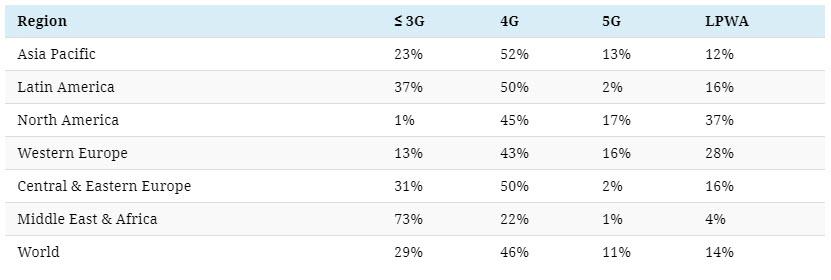 By B.N. Frank
By B.N. Frank
No Studies Prove It’s Safe and Opposition Continues to Increase
The majority of scientists worldwide are opposed to 5G until there are studies that prove it’s safe. Seems reasonable, right? Additionally, cities AND entire countries have taken action to ban, delay, halt, and limit installation AS WELL AS issue moratoriums on deployment. Critics also warn 5G will create massive job loss, the end of privacy, and HUGE cybersecurity risks. Other bummers include:
- 5G requires 2-3X more energy to operate than 4G (see 1, 2, 3)
- 5G will generate TONS more unrecyclable E-Waste (see 1, 2)
- 5G will cause more injury, death, and devastation to adult and child laborers who mine for “conflict minerals” (see 1, 2, 3)
- 5G can cause base stations to overheat (so maybe somebody should alert firefighters)
From Zero Hedge:
By 2025, the world will reach 1.8 billion 5G connections – led by Developed Asia and North America, two regions that could each see nearly half of mobile connections operating on 5G networks.
This sweeping rollout relies on infrastructure capacities, and, as Visual Capitalist’s Iman Ghosh notes, many operators are buying in big to usher in 5G adoption. This infographic from Raconteur covers where we are on the roadmap towards 5G becoming mainstream, and which regions are leading the way in connectivity.
Commercial Launches of 5G Networks
From its earliest iterations to the Internet of Things, we’ve surpassed three generations of wireless networks. Now, 5G is at a tipping point.
5G is unique in that in order to actually start using the network, you need a device that works on it—unlike previous generations where they could simply switch over. Moreover, carriers need to invest in the infrastructure to optimize network access and the density of devices using it.
As more operators buy into the technology, the latter is finally beginning to happen in some areas. Here’s how the total numbers break down across the world, as of mid-September 2020:
- 397 operators are investing in 5G mobile or 5G fixed wireless access/home broadband networks
- 118 operators have announced the deployment of 5G within their live network
- 96 operators have announced 3GPP (protocols for mobile telecomms) 5G service launches
Major phone operators and even tech companies are behind accelerating this change, from Vodafone to Verizon—and most recently, Microsoft has entered the playing field.
Cross-Generational Mobile Connections, By Region
As Cisco highlights, there’s more room to grow yet. By 2023, North America will have the highest share of 5G networks, at 17% within the region.

*Low-power wide-area (LPWA) networks are a generic type of network that can coexist across 2G, 3G, and 4G. Network shares may not add up due to rounding.
Meanwhile, the Middle East and Africa could have the most catching up to do, with 73% of the region still operating on 3G networks or less in 2023. The good news? Commercial 5G trials in Nigeria may signal the potential of networks leapfrogging ahead.
Need for Speed
As the number of 5G networks tick up, there will be an undeniable boost to mobile and broadband speeds (Mbps) across regions by 2023. In particular, Asia Pacific will have the fastest broadband speeds at 157 Mbps while Western Europe will lead with 62 Mbps on mobile.
Faster speeds is one of several factors catapulting the promise of 5G networks to unlock transformations across entire industries, from manufacturing to healthcare.
What further advancements could dial reach region’s share of 5G networks all the way up?
Transforming health care indeed! Since 2018, people and animals have experienced undesirable symptoms and illnesses after 5G was installed (see 1, 2, 3, 4). Of course exposure to other sources of wireless radiation can cause symptoms and illnesses too. Last year, the World Health Organization warned that high levels of Electromagnetic Fields (aka “Electrosmog”) could lead to health issues in a significant percentage of the population.
High-speed internet CAN be achieved without 5G and without wireless connections. Wired Ethernet connections are safer, more secure, and less vulnerable to hackers who can also set devices on fire. American taxpayers have already paid to have high-speed internet even though many still don’t (see 1, 2, 3). Federal agencies also warn that 5G could threaten national security, public safety, and weather forecasting accuracy.
But for those who can afford it and actually want 5G – faster connections, yo!
Activist Post reports regularly about 5G and other unsafe technology. For more information, visit our archives and the following websites:
- 5GCrisis
- 5GFree
- 5G Information
- 5G Space Appeal
- The 5G Summit
- Electromagnetic Radiation Safety
- Environmental Health Trust
- Physicians for Safe Technology
- TelecomPowerGrab.com
- Whatis5G.Info
- Wireless Information Network
Subscribe to Activist Post for truth, peace, and freedom news. Send resources to the front lines of peace and freedom HERE! Follow us on SoMee, HIVE, Parler, Flote, Minds, and Twitter.
Provide, Protect and Profit from what’s coming! Get a free issue of Counter Markets today.



Be the first to comment on "Chart Reveals 1.8 BILLION 5G Connections Worldwide by 2025"